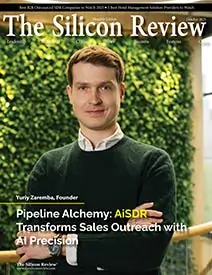>>
Industry>>
Space>>
Starship's Historic Lunar Flyb...Starship's Historic Lunar Flyby Launch Opens New Chapter in Human-Machine Space Collaboration
The Silicon Review
08 April, 2025
SpaceX’s Starship has successfully launched NASA astronauts toward the Moon for a flyby, marking the first human mission on a fully reusable spacecraft—and igniting a new phase of automation in extraterrestrial logistics.
In a groundbreaking achievement for commercial spaceflight and human-robotic synergy, SpaceX launched its Starship Moon mission on March 18, 2025, carrying NASA astronauts for a historic lunar flyby. This mission marks the first time humans have flown aboard a fully reusable spacecraft on a deep-space trajectory—setting a precedent not just for exploration, but for industrial-grade automation beyond Earth. The Starship’s fully integrated launch architecture—developed to transport cargo, equipment, and crew—showcases a maturing convergence of human and machine systems at scale. Unlike previous lunar missions driven almost entirely by government-led infrastructure, this mission reflects a dynamic public-private model that relies heavily on autonomous systems, machine learning optimization, and scalable hardware adaptability.
While the astronauts on board are the human face of the mission, the broader operation is a testament to automation’s role in high-stakes aerospace logistics. Everything from trajectory correction burns to life-support systems and in-flight diagnostics leverages embedded AI and decision-making software. As space becomes more commercialized, the industrial automation underpinning these missions is not just a technical feature—it’s the enabler. This launch signifies a new operational paradigm where spacecraft function as modular, reusable platforms capable of automated reconfiguration between missions. That adaptability is vital for future endeavors involving lunar infrastructure development, deep-space resource transport, and robotic assembly tasks.
Business and technology leaders in adjacent industries—from aerospace manufacturing to AI-driven systems design—should interpret this not as a distant milestone but as a near-term signal. The successful integration of autonomous systems in extreme environments will likely accelerate similar innovation in terrestrial industries seeking resilience, redundancy, and remote operability. SpaceX’s lunar flyby isn’t just a mission to the Moon—it’s a systems blueprint for next-generation automation in high-risk, high-reward environments.


_2025-11-17_06-38-14.webp)

 (1)_2025-10-21_13-35-14.webp)

_2025-10-02_10-21-48.webp)